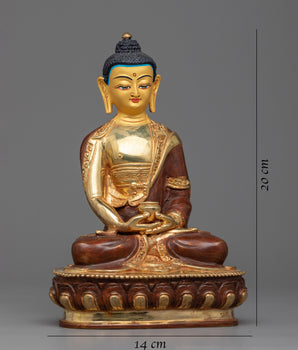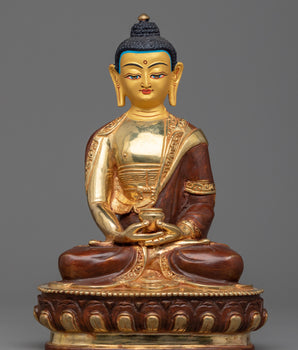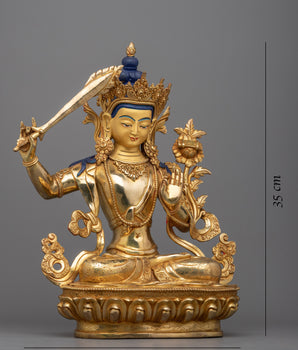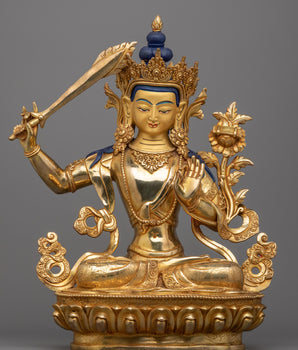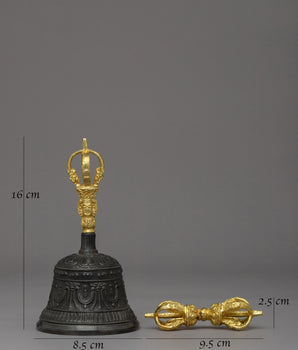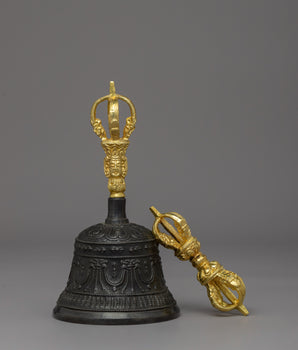The Sacred Fusion of Art, Healing, and Craftsmanship
Crystals have formerly been valued due to decorative, healing, and semantic messages. The fascinating attraction of it has transcended the old civilizations and has reached modern craftsmen. Their integration into art, more especially in the production of jewelry and statues, makes them even more distinctive. Weaving a craftsmanship, artistic tendency, and a strong tie to metaphysical properties that the stones are supposed to have is required for the intricate procedure of the usage of crystals in these works. We will dive into the usage of the crystals in jewelry, sculpture, and the art of craftsmanship, and the stunning beauty of the masterpieces.
The Significance of Crystals in Art

Crystals are implements that have been in use for centuries in ornamental and spiritual purposes. For some, they are more than decoration; they tend to have a deeper meaning connected to healing, protection, and energy balancing. There is a calming energy of amethyst, grounding of hematite, and love-amplifying power of rose quartz. Crystals have always been considered to have metaphysical properties.
In art, they are not only the aesthetic component but also a strong instrument for growth on the spiritual and self-discovery paths. Crystals can be incorporated into the workings of jewelry and statues, which can be used to transmit these energies, adding beauty and positive frequencies to them.
Symbolism of Crystals in the Buddhist Iconography
Crystals are very symbolic in Buddhist iconography and act as spiritual vectors, embodying fundamental virtues and precepts of the Dharma. Rocks and precious minerals are used in Tibetan Vajrayana and East Asian Mahayana countries in the incorporation into statues, mandalas, and ritual implements to depict divine qualities of enlightened beings like compassion, wisdom, and protection. The clear quartz, which is a “master healer,” means purity of mind, spiritual clarity, and unclouded truth. Others, such as lapis lazuli, turquoise, and jade, have rich cosmological meaning; they are connected with healing, wisdom, and a strong connection to the spiritual world. It acts as a symbol in mandalas of different realms or elements, such as water and fire, and is designed with deliberate considerations of cosmic and philosophical elements in Buddhist cosmology. They are not only decorating the sacred artwork, but also taking the observer closer to spirituality.
Mindful Craftsmanship: The Use of Buddhist Philosophy in Forming Crystal Art

Buddhist artistry is an example of contemplative meditation that is very much connected to spiritual philosophy. The making of a crystal-infused statue or jewel involves setting of intention and presence of spirit, consequently compatible with the Buddhist commandment of mindfulness. The artisan’s hands conduct a peaceful, centered energy that intoxicates the final piece with peace, compassion, and purpose. Numerous Buddhist monks and traditional craftsmen regard their work as an expression of devotion, and the very process of sculpting or setting it turns into a part of a sacred ritual. The Five Buddhist Precepts for ethical conduct cause artisans to make sure that it is acquired ethically and sustainably, preserving the Earth and those who have worked on every stone.
The Crystal Infusion Process of Jewelry
Choosing the right stones takes the first step to add crystals to jewelry. Each of them has its own properties of color and texture, and the right choice is as important as the design and practical matter of the piece.
1. Sourcing the Stones
Crystals are available in a variety of types: rough, polished, tumbled, and faceted. Designers and jewelers usually prefer polished stones when creating jewelry as they demonstrate the natural beauty and color and make the stones easier to work with. Other jewelers want a rough form, they add an organic feel to the piece. The artisans mostly work with known suppliers who make sure that the crystals are ethically obtained, which not only maintains their value but also that of the craft.
2. Designing the Jewelry

The design process starts when the crystals have been chosen. Artisans take into account the size and shape, as well as the metaphysical properties, of the it to make a piece that complements its natural beauty and increases its energy. This might involve the addition of it to a pendant, ring, bracelet, or earrings, even when set in precious metals such as silver, gold, or platinum, to accentuate the color and brilliance of the stone.
Other jewelers may prefer complex details, which will accentuate the crystal as the key focus, whereas others may prefer less ostentatious settings that will let it’s natural form and texture show through.
3. Crystal Setting

Setting the crystal is one of the most important stages of jewelry design. The stone has to be installed permanently without any destruction to the environment. This can be prongs, bezels, or custom settings, depending on the design, all of which are chosen for their usefulness and elegance.
For example, stones having a smooth surface, which need firm holding, like the cabochons (polished but not faceted stones), can be very nice in a bezel setting. Prongs, in contrast, are often used in faceted stones as they enhance the amount of light that may be able to enter the stone and add brilliance to the stone.
4. Finishing Touches
Once the crystal is set, the jeweler practices on the finishes – the polishing, the engraving, and the addition of any other design, such as smaller accent stones or complicated metalwork. This is the phase where the whole piece ends up, and the beauty of it also comes out.
Crystal Infusion into Statues and Sculptures
Crystals, just the same way, make jewelry more energetic and meaningful, and add to the beauty and symbolism of sculptures and statues. It is imbued into these bigger forms of art in multiple ways by artists, forming objects that have an energy that carries with it great visual appeal.
1. The Choice of the Right Crystal for the Sculpture
The first process in creating a crystal-infused statue is to choose the right ones. Stones may be selected due to their aesthetic or metaphysical qualities. For instance, a statue of a Buddha may be charged with amethyst with a belief that it brings peace and tranquility, and a statue of a lion may be decorated with citrine, which is supposed to stimulate courage and strength.
Crystals may be used in various forms in sculptures. Others are inserted into the sculpture itself, and others may simply make useful accents to specially accentuate parts of the piece. For some purposes, it is used to add fuller texture or emphasize certain elements of the sculpture.
2. Sculpting the Base

The sculptor usually starts with a base from stone, clay, or resin. This is where the artist’s skill and precision become truly breathing, as the base of the sculpture needs to be tailored to the degree that would allow it to not only support the embedded crystals, but also form a kind of canvas for accenting their natural beauty.
3. Incorporating the Crystals
When complete, the sculptor can start incorporating crystals into this work of art. This can be chiseling spaces into the sculpture in which to adequately mount it or their trial association to complement the design. On certain occasions, the artist will mix different forms of stones to create a mosaic pattern, bringing together all sorts of colors and textures to produce a proper unit.
The crystals may not get covered in some cases, so that their natural radiance can penetrate through. In other cases, they can partially overlap the surrounding materials, which reveal their color and texture as part of the sculpture’s inner technology.
4. Finishing the Sculpture
When the crystals are put into place, the artist completes the sculpture by smoothing away rough edges and perfecting the details. It can be either polished or retained with its natural texture, depending on the artist’s visual effect and taste, and character of the sculpture.
The Symbolism Behind Crystal Artistry

Aside from the aesthetic beauty of crystal-infused art, these have great symbolic meanings. Each of them is thought to contain individual healing qualities that can augment the energy of an environment or person. Some common examples include:
Amethyst: Well-known for its peace inducing spiritual properties, amethyst is common in art for the purpose of inciting peace, intuition and improving emotional healing.
Rose Quartz: A gemstone for love and compassion, rose quartz is often incorporated into pieces designed to help those who use it emotionally heal and learn to love themselves.
Citrine: This is a lively piece of yellow stone that is said to bring joy, prosperity, and creativity.
Clear Quartz: As a master healer, clear quartz is known to increase energy and intentions.
Regardless of whether they’re used in a piece of jewelry or in a larger sculpture, the incorporation of crystals adds another dimension of meaning and energy to the artwork, creating not just a beautiful but a healing, inspiring object.
Modern Innovations in Crystal Artistry
The art of creating crystals has found a new life in modern days due to the fusion of modern technology and novel principles of design. The 3D printing technology helps artists make trials of the precision mold and an individual setting for individual shapes, making jewelry and sculptures more accurate and structurally sound. Laser cutting and engraving also have a significant role in cutting the fine details in them without destroying their natural shape. Modern artists are experimenting with new ways in which it can be merged with unusual materials like hand-blown glass and recycled metals to conjure masterpieces that unite the natural look with a modern look. Artists such as Lauren Fenster Stock and Debra Baxter are challenging the envelope with their crystal-based creations, which trace a larger cultural trend of acknowledging the metaphysical and historical value and celebrating the boundless artistry potential of the time.
Conclusion
Crystal artistry, which is an old practice that is not only spiritual but also aesthetically significant, is evolving, but with the same set of values of mindfulness, symbolism, and craftsmanship at its core. The application of it in art denotes intention, healing, and attachment of humans to the metaphysical world. Being a part of Buddhist iconography, hand-crafted jewelry, or a complex of elaborately sculpted sculptures, each of them combines visual aesthetics and a layered story of cultural beliefs and spiritual practices. With the help of the modern technologies such as 3D printing, laser engraving, and sustainable sourcing, the boundaries of it's art are being redrawn by modern artists who combine the latest innovation and ancient symbolism transcending into energetic and metaphysical properties of crystals, first becoming a hobby for both genders, while later progressing into a profitable business. In the world of artistry, there is a perspective that connects the material and the mystical, bringing the viewers face to face with a physical connection to their inner peace, healing, and transformation.






